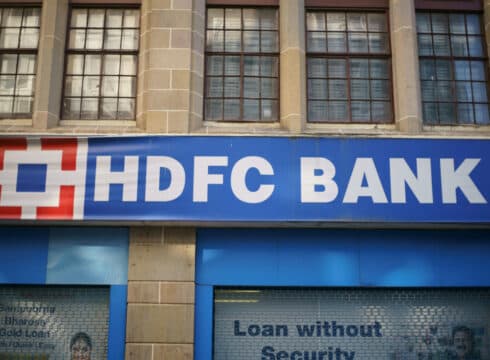The facility would enable it to execute transactions in no-network areas and urban pockets with bad networks: HDFC Bank
HDFC said that it would roll out the service as part of a limited pilot for four months in around 16 cities and towns
The development comes under the fourth cohort of the RBI’s regulatory sandbox for digital payments, themed ‘On Tap’ payments
Inc42 Daily Brief
Stay Ahead With Daily News & Analysis on India’s Tech & Startup Economy
HDFC Bank has started a pilot project to enable digital payments in the offline mode under a regulatory facility.
The country’s largest private bank said the facility would enable it to execute transactions in no-network areas and urban pockets with bad networks.
HDFC Bank has started the offline digital payments pilot project in partnership with Sweden-based Crunchfish AB, India’s IDFC Bank and M2P Fintech. The pilot is happening under the fourth cohort of the Reserve Bank of India (RBI) regulatory sandbox.
The fourth cohort was themed ‘On Tap’ for retail payments. “This ‘On Tap’ facility is expected to help in continuous innovation and engagement with innovators and proactively respond to the dynamics of rapidly evolving fintech scenario,” the central bank said in the announcement in October 2021.
After nearly a year of going through applications, the RBI selected HDFC Bank and Precision Biometric India, with the two companies developing two different products for the same application.
HDFC’s product is called ‘Offline Retail Payments’. With that, the private bank enables customers and merchants to pay and receive payments in offline mode.
In a written statement, HDFC said that it would roll out the service as part of a limited pilot for four months in around 16 cities and towns across India. It would also limit offline transactions to a maximum of INR 200 per transaction.
According to HDFC, it is looking to ensure that a transaction goes through even when both the customer and merchant are fully offline. Since digital payments typically require either the customer or the merchant to be online, the transaction would be settled as soon as either of those goes online, HDFC said.
“This innovation will accelerate financial inclusion in remote areas by enabling the adoption of digital payments as both merchants and customers can do transactions without any network,” said Parag Rao, HDFC’s country head for the payments business.
Digital payments are typically done online and India has the United Payments Interface (UPI) for the same. In January 2023, UPI enabled as many as 803 Cr payments worth INR 12.98 Cr.
India’s digital payments ecosystem is the second-largest in the world, behind only China. As such, India’s startup ecosystem has also benefited from the rise of UPI and digital payments, as Indian digital payments startups have raised $5.05 Bn between 2014 and 2022, per Inc42 data.
Further, the country’s digital payments market is currently worth $165 Bn, according to Inc42 data, and is set to reach $253 Bn in size by 2030, growing at a CAGR of 5%.
Recently, the Union Cabinet notified a subsidy scheme worth INR 2,600 Cr to promote small-ticket UPI apps in the country. Further, the government also clarified that the subsidy availed under the said scheme would be non-taxable.
{{#name}}{{name}}{{/name}}{{^name}}-{{/name}}
{{#description}}{{description}}...{{/description}}{{^description}}-{{/description}}
Note: We at Inc42 take our ethics very seriously. More information about it can be found here.


